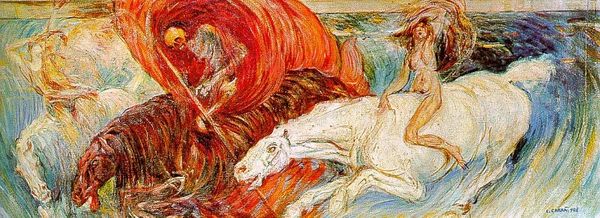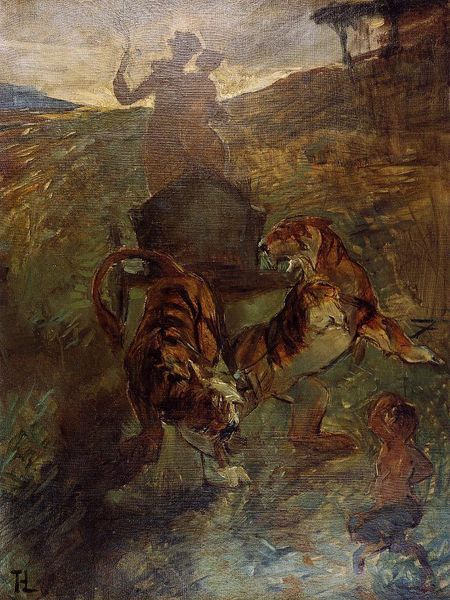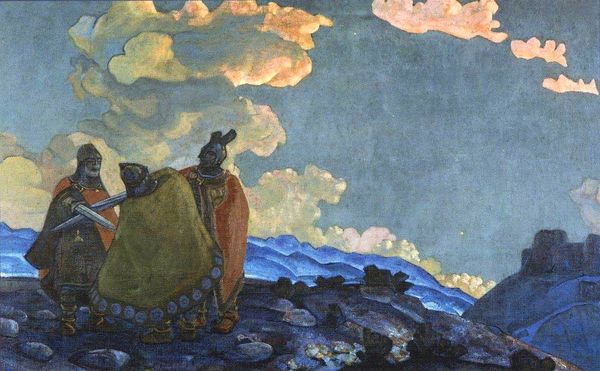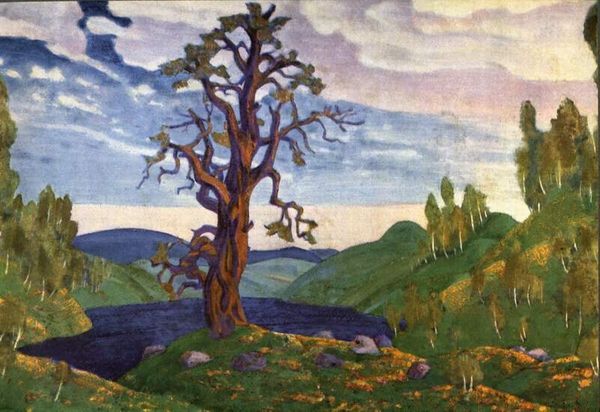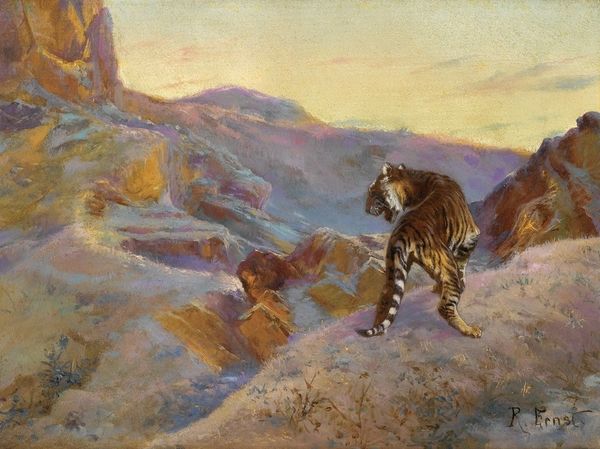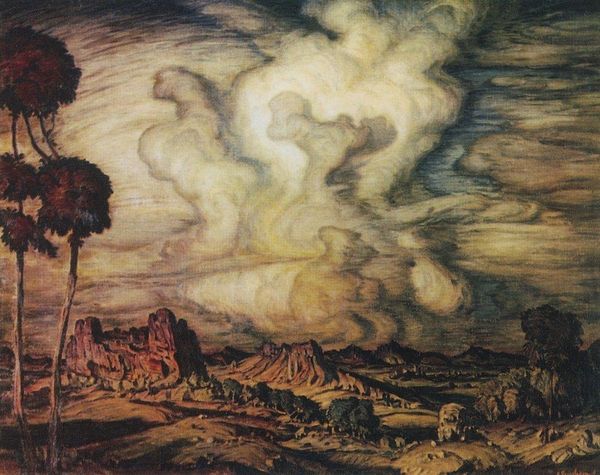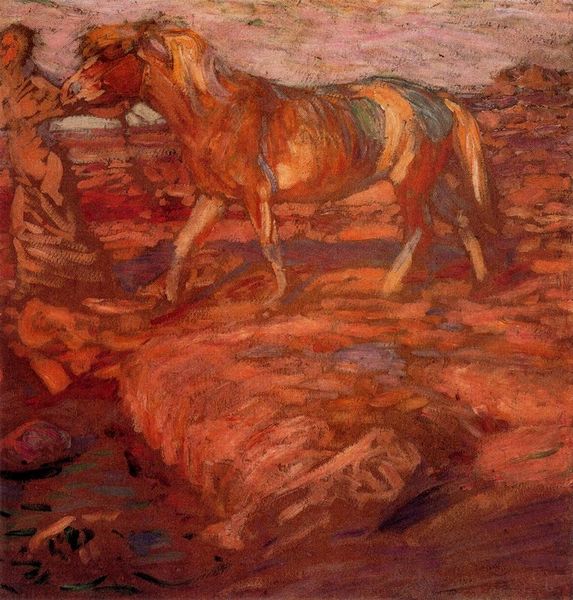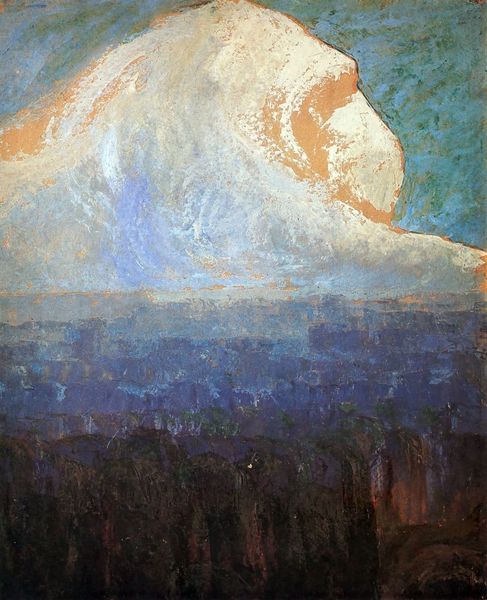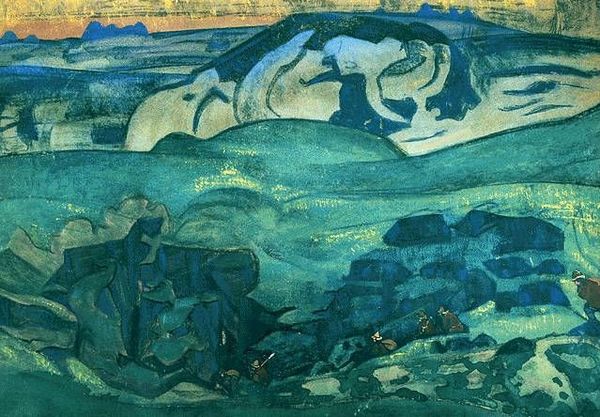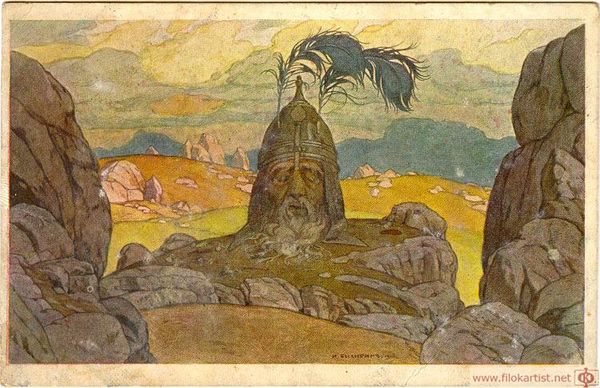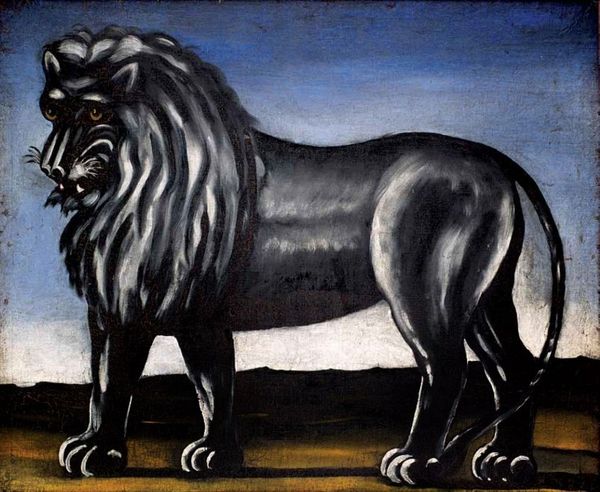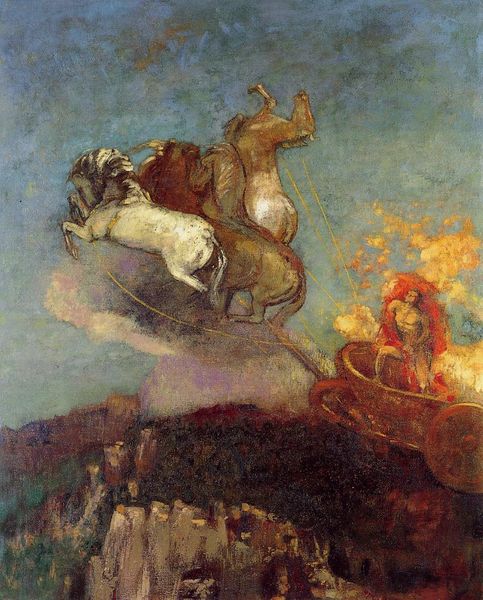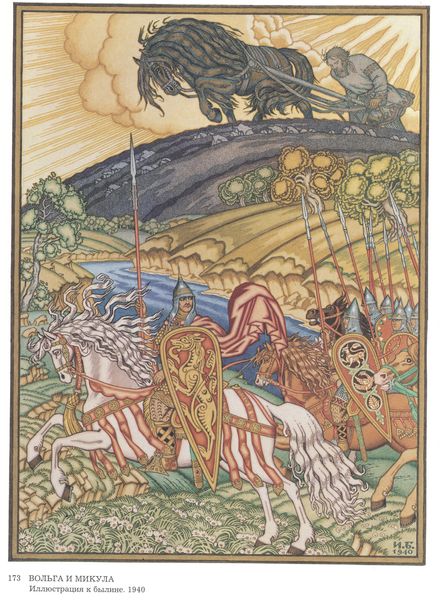
painting, oil-paint
#
animal
#
painting
#
oil-paint
#
landscape
#
figuration
#
oil painting
#
horse
#
mythology
#
symbolism
#
russian-avant-garde
#
history-painting
#
expressionist
Dimensions: 203 x 494 cm
Copyright: Public domain
Editor: We’re looking at “Mikula Selyaninovich,” an oil painting by Nicholas Roerich from 1909. The color palette is very muted. There’s a man with a horse in a hilly, almost dreamlike landscape. What do you see in this piece? Curator: I see Roerich tapping into deep veins of Russian cultural identity at a time of great upheaval. The painting isn’t just a representation of a mythical hero, Mikula, a strong peasant farmer. It speaks to the idealization of rural life, of indigeneity, and the spiritual power of the land in the face of encroaching modernity and social stratification. Consider how the figure seems integrated into the landscape, a symbol of national strength rooted in the earth. Editor: So, it’s more than just a mythological scene. It has a socio-political context? Curator: Absolutely. The Russian avant-garde was deeply intertwined with nationalist sentiments, often looking to folklore and peasant traditions for authentic cultural expression and resistance against western cultural domination. How does Roerich’s use of color, almost monochromatic, contribute to that feeling of a deep historical connection? Editor: I see what you mean. The limited palette, mostly blues and browns, makes it feel timeless, like a memory. Curator: Exactly. And Mikula himself wasn’t just any peasant; he was mythically strong. So, Roerich presents this connection to the land as a source of not just cultural identity, but strength, echoing calls for national and social revival rooted in traditional values. The Russian avant-garde aimed to connect modern art and design to traditional folk art, elevating craftsmanship while challenging hierarchies. Editor: That's fascinating! I hadn’t considered the political undercurrent. I was just thinking about it as a pretty picture of a legend. Curator: Art is rarely "just" anything, is it? Seeing art through an activist lens means understanding that it’s always participating in broader conversations about power, identity, and social change, even when it seems to simply depict a landscape or a myth. Editor: I’ll definitely look at art differently now. Thanks for opening my eyes!
Comments
No comments
Be the first to comment and join the conversation on the ultimate creative platform.
